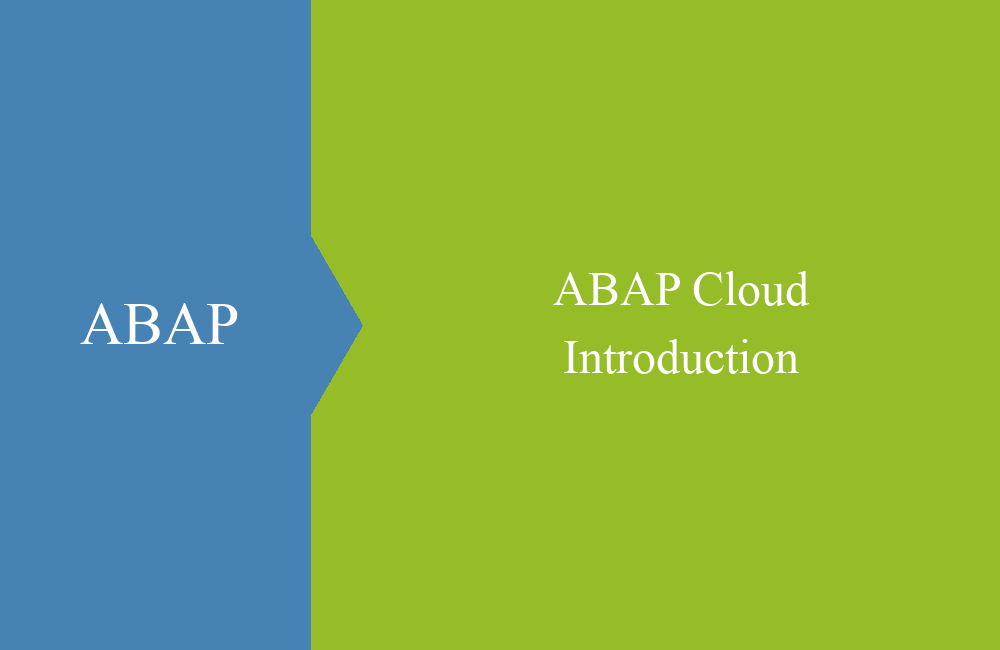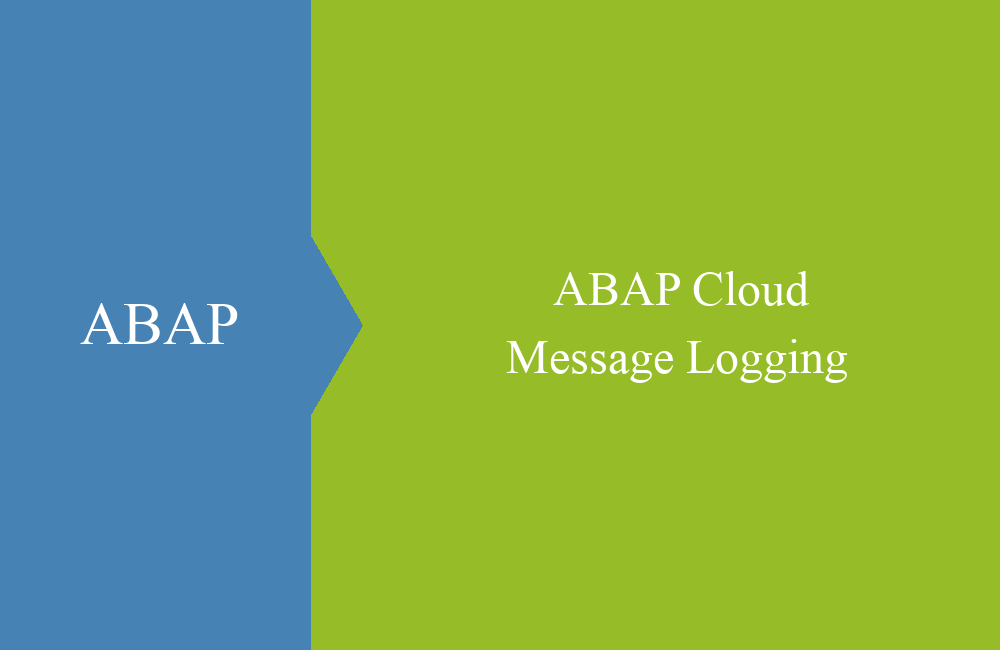
ABAP Cloud - Introduction
What is ABAP Cloud, what does it do and how can we use it? This article is about introducing the topic.
Table of contents
ABAP Cloud is currently the most popular topic for ABAP developers, but what does it actually mean? In this article we will take a closer look at ABAP Cloud and look behind the concept. What does it mean for you as an ABAP developer to use the development model?
Introduction
ABAP Cloud is the new development model for all SAP platforms, regardless of whether the SAP BTP ABAP Environment, S/4 HANA public cloud, private cloud or on-premise. This means that the model can be used on all systems. To do this, however, you need at least one on-premise system with S/4 HANA 2022 release, but ideally 2023 in order to be able to fully use all features.
With ABAP Cloud you can create Clean Core and Cloud Ready applications, one of the goals in development on an S/4 HANA system if you have set yourself the goal of Clean Core.
3-TIER Model
The cornerstone for implementing ABAP Cloud is the 3-TIER model, where development objects are classified according to three different levels:
- TIER-1 - Objects in the language version "ABAP Cloud", these only use released APIs to access the core of the system. The objects are created or moved to packages with software components for ABAP Cloud.
- TIER-2 - In the API layer, non-released APIs from SAP (BAPI, Class, Core Data Service) are wrapped and released for TIER-1 via a release contract. There are various tips here as to which objects are suitable for release.
- TIER-3 - Includes “Classic ABAP”, everything that can already be done in ABAP development today is possible here. When ABAP Cloud is introduced, all previously developed objects automatically become TIER-3 and must first be transferred to TIER-1 packages.
Hint: A big goal when introducing ABAP Cloud is the slow reduction of the third TIER and thus more and more implementations in TIER-1. TIER-2 wrappers are created where they are needed in order to access the standard SAP APIs, which are not released but are absolutely necessary for its implementation.
Coupling
In the graphic for the 3-TIER model there is also the difference between “Tightly coupled” and “Loosely coupled”, what does that actually mean? If you already have an ABAP environment, then you will have probably asked yourself where should you implement an application. With ABAP Cloud, you can also build clean core applications on the stack, why implement them on the ABAP Environment?
First of all, we would like to give you a few key figures as to when it makes sense to implement an application on which system:
- Tightly coupled - Such applications are implemented in the core system because they require a local standard API or implement a BADI. We would also not recommend applications with high data access in BTP as this would make them much slower.
- Loosely coupled - The application has its own data model and only needs occasional read access to the core system? This makes the application ideal for side-by-side implementation. Simple reporting is also possible.
What advantages does a side-by-side implementation offer? In the next few years there will only be releases with innovations every two years for on-premise. The ABAP Environment always offers the latest technology, whether for applications or for training developers. If you want to “learn” the ABAP development tools, then working on this system is also a good idea, as you have no other way to create ABAP code.
Concepts
The biggest challenge for TIER-1 developments is the use of new concepts that replace existing concepts. The Application Job, the new classes for the Application Log and RAP are some of the new concepts. Further information can be found on our information page about the ABAP Cloud concepts.
However, old concepts also have to be forgotten because they no longer belong to the ABAP Cloud Layer, such as SAP GUI, Web Dynpro or access to the file system.
Advantages
What are the advantages of implementing ABAP Cloud in your system? Here you will find a summary of the points that are important to us:
- Clean Core and Cloud Ready Architecture - If ABAP Cloud has been implemented 100%, nothing stands in the way of moving to SAP's public cloud. At the same time, you have the security that the changeover will run smoothly after the end of maintenance in 2040 and that the work will not just begin there.
- Decoupling - Applications are decoupled from the standard and use stable APIs, so the testing effort after a release is no longer as great, as in-house developments are not affected by the changes.
- Upgrade speed - Less rework in the SPAU and SPAU_ENH if the system avoids modifications and only uses the released objects. This allows you to increase the system update cycles and save resources on rework.
- TODO list - All objects in TIER-2 are clearly addressed to SAP; APIs and interfaces are required here in order to be able to implement Clean Core cleanly.
- Switching to Fiori - At the moment, many customers are afraid of switching to Fiori, so there is a reason to be able to argue for switching to the Fiori Launchpad or Workzone.
Disadvantages
Are there actually any disadvantages to using ABAP Cloud? Let's take a look at a rough overview of the disadvantages from our point of view:
- Time required - If a standard API is not available, the right object must be found and a wrapper must then be created. This takes more time than using the well-known SAP module.
- Learning effort - Learning the new concept, knowing the APIs and being able to use RAP easily and effectively requires a lot of effort and time.
Informations
If you need further information on the subject of ABAP Cloud, the official SAP channels or older articles from us are available. Here is a small selection:
- Devtoberfest 2023 - ABAP Cloud
- Extensibilty Guide für S/4 HANA
- Blog - The new extensibility guide
- Certificate as ABAP Cloud Developer
How do you actually find the right API for TIER-1 and which Classic ABAP object can you use to easily make it available in TIER-2? There are two tools for this:
Conclusion
ABAP Cloud means, on the one hand, new opportunities for modernizing an S/4 system and introducing new concepts, but on the other hand, it means a very big change for the classic ABAP developer. ABAP Cloud will be more challenging and it is still questionable whether all companies will follow suit.






